Autism Unemployment Rate

Understanding the Landscape of Autism Employment
Autism Spectrum Disorder (ASD) presents unique challenges that often hinder individuals from securing and maintaining employment. Around the world, statistics reveal alarmingly high unemployment rates among autistic adults, highlighting the critical need for targeted support, inclusive policies, and societal change. This article delves into the current state of employment among autistic individuals, exploring key factors influencing their job prospects, the barriers they face, ongoing initiatives aiming to improve outcomes, and the research driving these developments.
Global and Regional Unemployment Rates among Autistic Adults
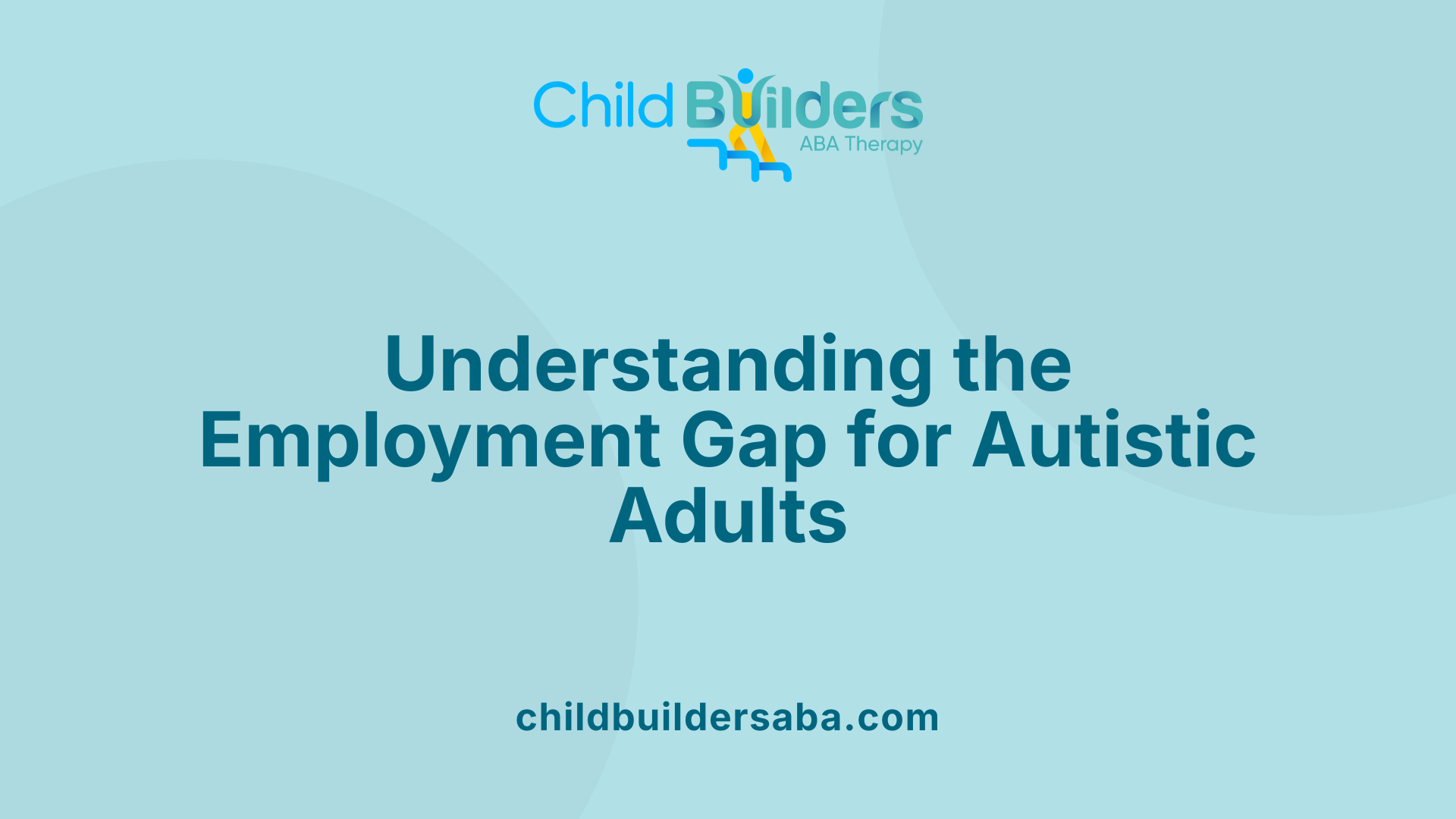
What are the unemployment rates among autistic individuals?
Autistic adults face persistent challenges in securing and maintaining employment worldwide. In Europe, studies from 2014 reveal alarmingly high unemployment rates ranging from 76% to 90%. These figures highlight the significant employment gap faced by autistic individuals in many European nations.
Across the Atlantic, in the United States, recent data from 2023 estimate that approximately 85% of autistic adults are unemployed. National surveys and longitudinal studies further support these figures, suggesting that only about 58% of young autistic adults have ever worked during their early 20s, with many holding part-time jobs earning around $9.11 per hour. Additionally, a 2021 study found that roughly 40% of autistic adults remain unemployed, emphasizing the ongoing difficulties in the labor market. Some estimates, including private sources, suggest unemployment could reach as high as 85% even among those with college degrees.
In the United Kingdom, the situation is similarly concerning. In 2017, the employment rate for autistic adults was approximately 32%, meaning about 68% were unemployed or underemployed. That same year, only 16% of employed autistic adults worked full-time. Nationally, the UK reports that 71% of autistic adults are unemployed, underscoring the widespread barriers faced in the job market.
When comparing these statistics with broader disability employment data, a stark contrast emerges. Overall, about 19.3% of persons with disabilities, including those with autism, were unemployed in 2020, according to the U.S. Bureau of Labor Statistics. For autistic individuals specifically, the unemployment rate tends to hover around 50% to 90%, much higher than the general disabled population.
Some private estimates, such as those cited by the Rocky Mountain PBS in April 2024, claim that unemployment among autistic adults could be even as high as 85%, especially among highly educated individuals. These figures underscore the persistent employment disparities and highlight the urgent need for targeted policies and workplace accommodations.
Effectively addressing employment barriers requires efforts from both public and private sectors to implement inclusive hiring practices, provide reasonable accommodations, and increase awareness about autism. Understanding regional differences and addressing specific challenges faced by autistic adults remain essential steps toward closing the employment gap.
Factors Influencing Employment Opportunities for Autistic Adults
What factors influence employment opportunities for autistic adults?
Employment prospects for autistic adults are shaped by a mix of personal traits, workplace environment, and societal influences.
On a personal level, characteristics such as communication skills, sensory sensitivities, and educational background significantly affect job opportunities. For instance, higher education levels are linked to better chances of employment, but many autistic adults still face barriers despite academic achievements. Difficulties with social interactions and sensory overload can hinder interview processes and workplace integration.
Workplace environments and employer attitudes are equally important. Supportive workplaces that understand autism and offer accommodations—like flexible schedules or quiet workspaces—can greatly improve retention. Disclosure of diagnosis, for example, has been associated with increased employment likelihood, especially when employers are receptive.
Societal factors also play a crucial role. Household income, race, and prior work experience influence employment rates. Data shows that higher household income and being White are associated with better employment outcomes. Additionally, prior work experience, including part-time jobs and internships during young adulthood, can boost prospects.
Efforts to enhance employment often focus on inclusive hiring practices and workplace accommodations. The Americans with Disabilities Act (ADA) emphasizes the importance of reasonable accommodations, which typically cost little and can help autistic workers succeed.
In summary, a combination of individual abilities, workplace support, and societal factors determines the employment success of autistic adults. Continued efforts to reduce barriers and promote inclusive practices are vital for improving employment rates among this population.
Challenges Faced in Gaining and Maintaining Employment
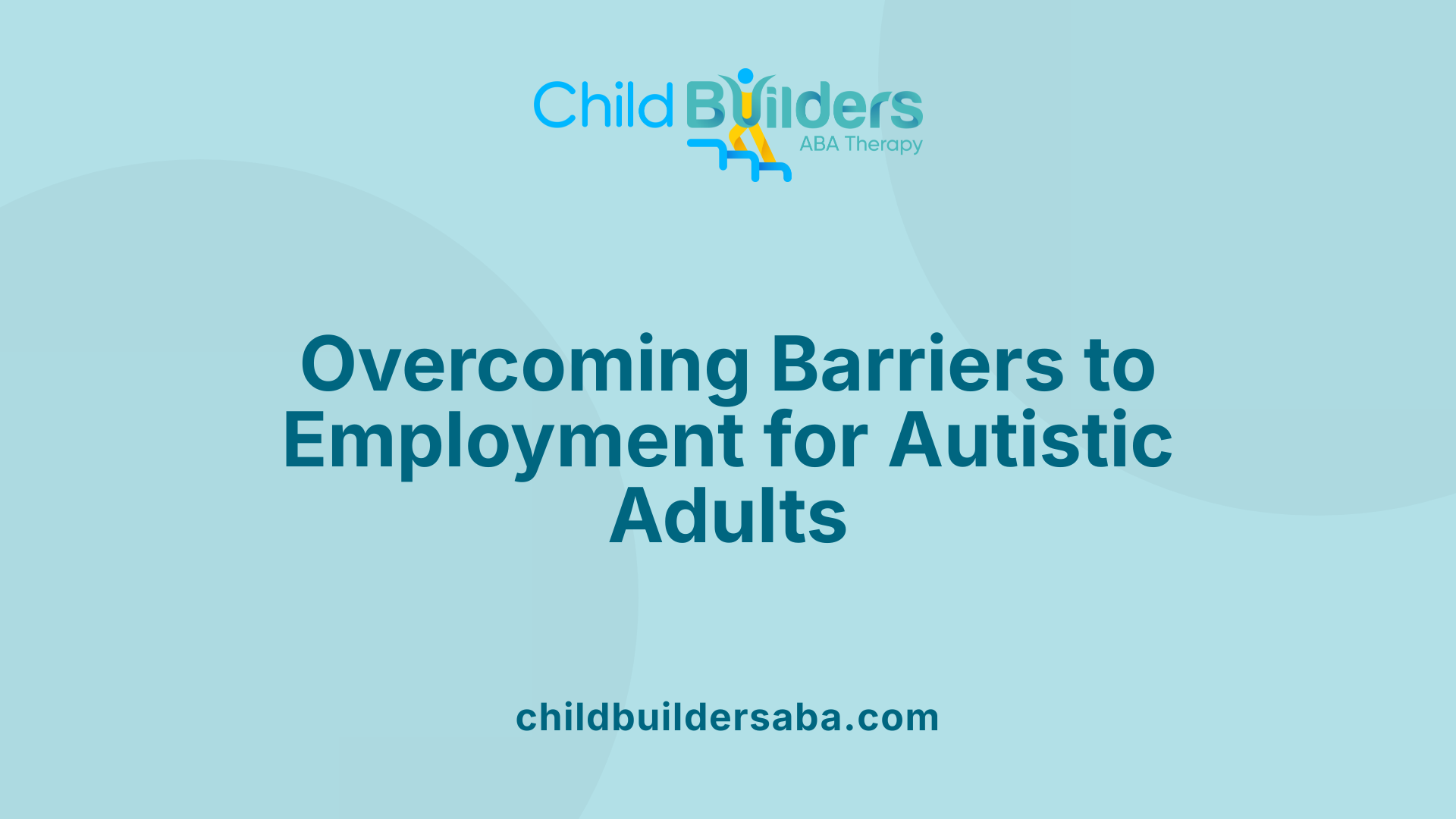
What are some challenges faced by autistic individuals in gaining employment?
Autistic individuals encounter numerous difficulties when it comes to obtaining and keeping jobs. A primary challenge stems from social interaction issues. Many autistic adults find interpreting social cues, such as body language and tone of voice, intimidating or confusing. This can make the interview process nerve-wracking and lead to misunderstandings with colleagues.
Sensory sensitivities are another significant barrier. Overexposure to stimuli like bright lights, loud noises, or strong smells can be overwhelming. These sensory issues often interfere with concentration and comfort, making standard work environments unsuitable without accommodations.
Executive functioning challenges—such as difficulties with planning, organizing, and transitioning between tasks—also impact work performance. These impairments can lead to struggles with time management and adapting to routine changes, affecting job stability.
Adding to these difficulties are biases and systemic barriers. Societal misconceptions and stereotypes about autism can lead to discrimination during hiring processes and in workplace settings. Many employers lack awareness or understanding of how to support autistic employees, which can result in job rejection or inadequate accommodations.
Furthermore, societal attitudes often hinder efforts to create inclusive workspaces. The combination of these factors reduces employment opportunities for autistic adults, despite their skills and potential.
Efforts to improve this situation include implementing inclusive hiring practices, providing workplace accommodations like quiet spaces or flexible schedules, and increasing awareness about autism. Such initiatives can foster welcoming environments, helping autistic adults find and retain meaningful employment.
Research and Data on Employment Outcomes for Autistic Individuals
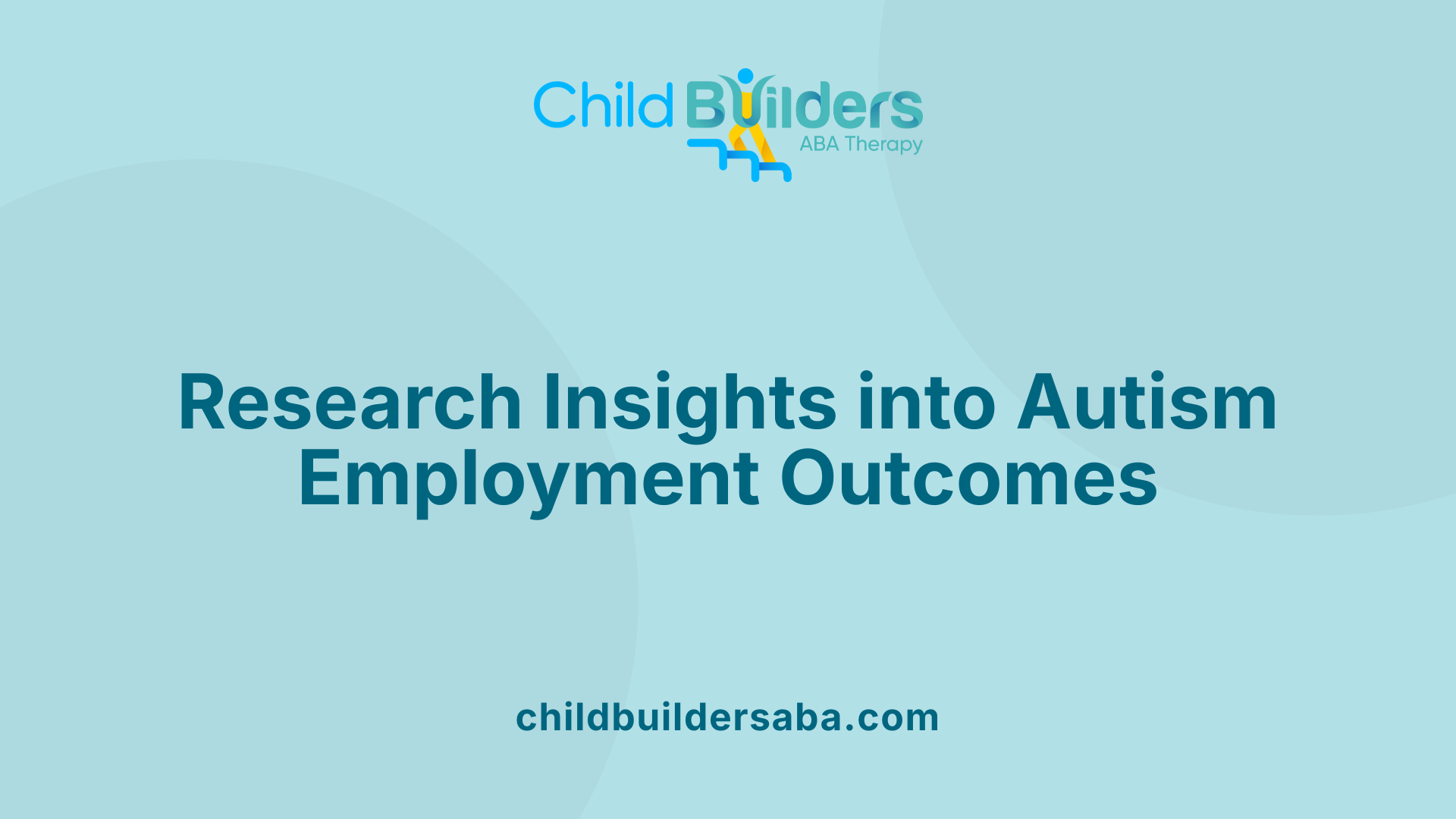
What research exists on employment outcomes for autistic individuals?
Research on employment among autistic adults demonstrates a wide range of employment rates, often indicating significant challenges within this population. Studies from the US, UK, and Europe report unemployment rates generally between 50% and nearly 90%. For example, in 2014, European data showed that 76% to 90% of autistic individuals were unemployed, while recent US statistics from 2023 estimate about 85% of autistic adults are unemployed. Similar figures are reflected in the UK, where 71% of autistic adults are unemployed.
Several factors influence these employment outcomes. Higher education levels and disclosure of an autism diagnosis to employers notably improve the chances of employment. A 2021 study in the National Library of Medicine revealed that adults who disclose their diagnosis are more than three times as likely to be employed. Additionally, socio-economic variables such as household income and demographic factors like race and ethnicity impact employment prospects.
Workplace support efforts, including tailored hiring programs and accommodations under laws like the ADA, are making some progress. These support systems help address barriers faced during hiring and job retention, although significant gaps remain. Despite these efforts, many autistic adults remain underemployed or marginally employed, earning less than their peers with other disabilities and often working part-time.
Considering wages and job stability, research indicates adults with autism tend to earn about 40% less than those with other disabilities. Additionally, longitudinal US studies show that fewer than 25% of autistic adults maintain full-time employment over long periods. Many work sporadically, hold multiple jobs in early adulthood, and experience job instability.
Education and diagnosis disclosure significantly influence employment success. Higher educational attainment correlates with increased chances of employment, and if autistic individuals disclose their diagnosis, they tend to access more workplace accommodations and support. Still, only about 30% are open about their diagnosis with employers, which limits the support they can receive.
In summary, while progress in employment practices is underway, persistent barriers related to societal attitudes, structural inequalities, and individual challenges continue to hinder employment prospects for autistic adults. Targeted interventions, inclusive policies, and increased awareness remain vital for bridging the employment gap.
Progress, Initiatives, and Policy Support in Autism Employment
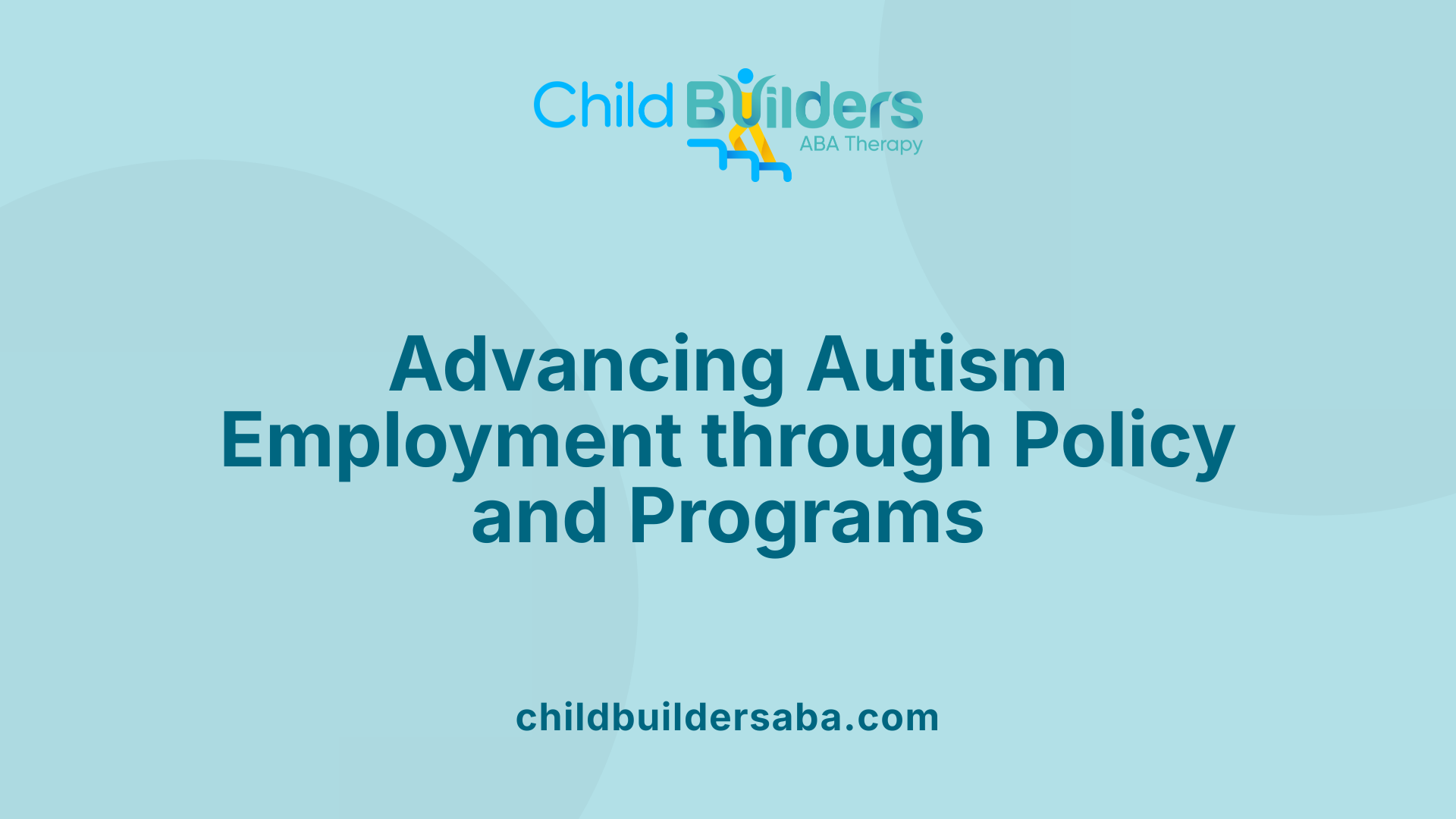
What progress and initiatives are underway to improve employment for autistic people?
Significant efforts are being made at multiple levels to enhance employment opportunities for autistic individuals. Governments and private organizations are actively working on programs that promote inclusive hiring practices and workplace support.
In Canada, initiatives like the Opportunities Fund for Persons with Disabilities help fund projects aimed at integrating autistic workers into the workforce. Similarly, organizations such as Specialisterne and auticon focus on recruiting neurodiverse professionals, advocating for workplace accommodations, and educating employers about the benefits of diverse teams.
Supported employment services have also expanded, offering tailored job placement, social skills training, and ongoing support. Programs like Project SEARCH Plus ASD Supports provide pre-employment training to improve social interactions and behavioral skills, preparing autistic individuals for meaningful employment.
Employers are increasingly adopting supportive practices, including sensory-friendly workspaces, flexible hours, and clear communication protocols, to better accommodate autistic employees. These adjustments often are low-cost but impactful, facilitating better integration and retention.
Community involvement and policy reforms are crucial components of ongoing progress. Raising awareness through campaigns, involving autistic voices in policy development, and strengthening legal protections under acts such as the Americans with Disabilities Act (ADA) contribute to creating more equitable employment environments.
Overall, these combined efforts are gradually transforming the employment landscape, aiming to close the autism employment gap and support autistic adults in reaching their full potential in the labor market.
The Importance of Inclusive Practices and Accommodations
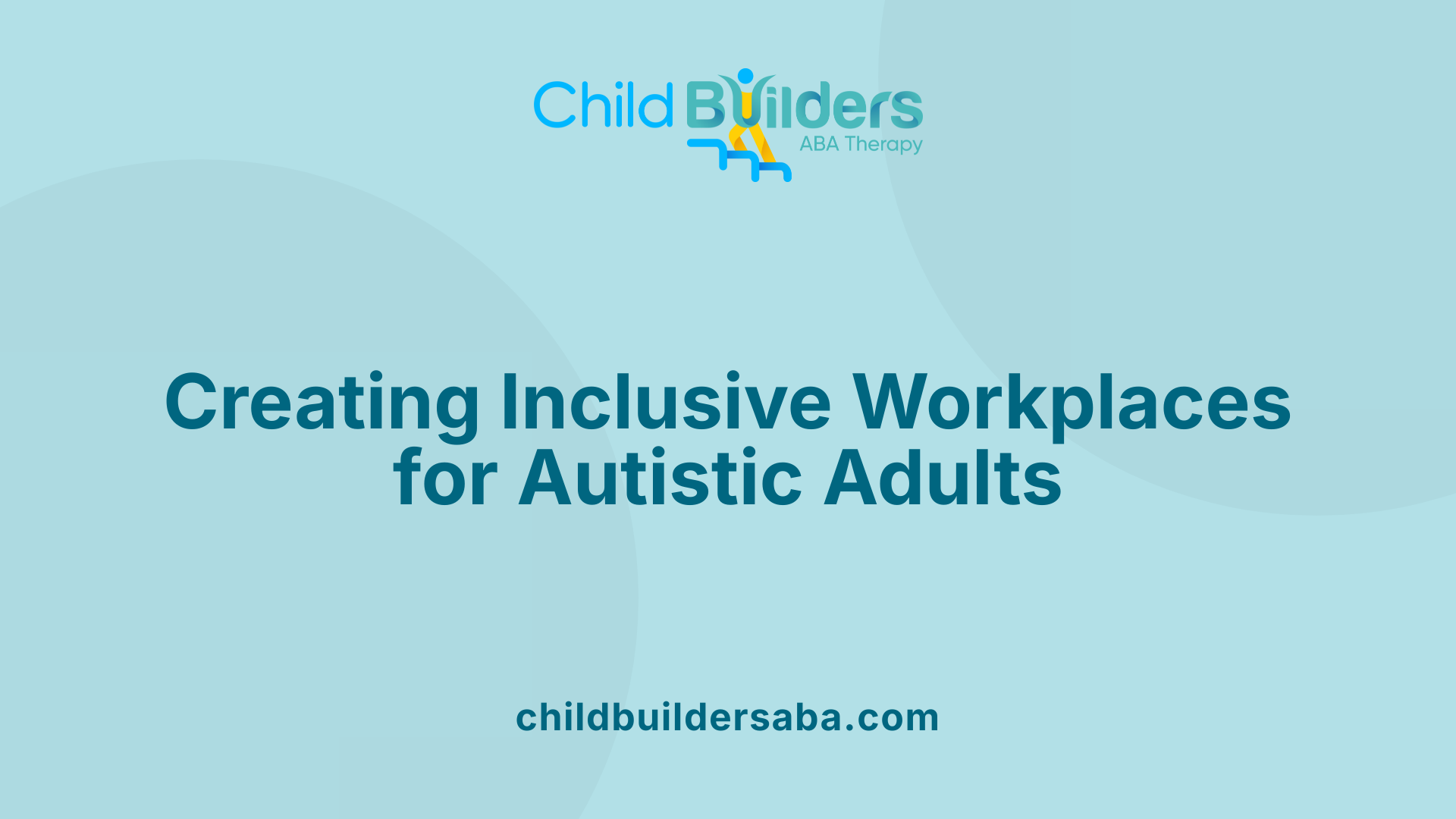
How can workplaces improve employment outcomes for autistic adults?
Creating supportive work environments can make a significant difference for autistic adults seeking employment. Legal protections like the Americans With Disabilities Act (ADA) play a vital role, requiring employers to provide reasonable accommodations to employees with autism. These accommodations often cost around $300 per adaptation and include measures such as sensory-friendly workspaces, flexible scheduling, and clear communication protocols.
Implementing these adjustments not only meets legal requirements but also promotes an inclusive workplace culture that values neurodiversity. Such environments encourage better job satisfaction, higher retention rates, and increased productivity among autistic employees.
Beyond legal compliance, inclusive employment strategies enhance overall workplace harmony. They foster innovation by bringing diverse perspectives and problem-solving approaches. Moreover, companies that prioritize these practices often enjoy a positive reputation, attracting top talent committed to diversity and inclusion.
In essence, tailored accommodations and inclusive policies serve as crucial tools for reducing the employment gap faced by autistic adults, creating more equitable opportunities for all.
| Aspect | Details | Additional Info |
|---|---|---|
| Legal Framework | Americans With Disabilities Act (ADA) | Mandates reasonable accommodations |
| Typical Costs | Around $300 per accommodation | Cost-effective for employers |
| Effective Adjustments | Sensory-friendly spaces, flexible hours, clear communication policies | Improves accessibility and comfort |
| Benefits | Higher retention, job satisfaction, diverse perspectives | Boosts overall productivity |
| The Goal | Inclusive, supportive work environments | Reduces employment disparities |
This approach underscores the importance of adaptive practices in enhancing employment prospects for autistic adults, ultimately fostering more inclusive, productive workplaces.
Conclusion: Moving Toward Greater Inclusion and Support
What is the outlook for improving employment rates among autistic adults?
The prospects for enhancing employment opportunities for autistic adults are gradually improving, despite current significant challenges. Unemployment rates among autistic individuals remain high, with estimates between 50% and 90%, and even private sources suggesting figures as high as 85%. However, increased advocacy, policy reforms, and societal shifts towards neurodiversity are contributing toward positive change.
Efforts such as implementing inclusive hiring practices, providing workplace accommodations—cost-effective and often minimal—aiding access to higher education, and raising awareness are fostering more supportive environments. Governments and organizations are recognizing the importance of diversity in the workplace, with initiatives aimed at reducing employment disparities.
Employers are now more open to making accommodations and embracing neurodiverse talents. Additionally, targeted programs and policies are helping to address barriers faced by autistic individuals, providing pathways for stable employment and career growth.
Ultimately, promoting understanding, reducing stigma, and mainstreaming disability inclusion within economic and social frameworks hold the potential to significantly improve employment outcomes. As awareness grows, and inclusive practices become standard, we can expect more autistic adults to find meaningful careers, contributing to a more equitable society.
More research and persistent advocacy remain crucial. Stakeholders such as policymakers, employers, and community organizations must continue working together to dismantle barriers and unlock the full potential of autistic individuals in the workforce.
Search for more insights on future perspectives on autism employment inclusion
Moving Forward: Embracing Autism in the Workforce
Achieving meaningful employment for autistic adults remains a challenge, but progress is within reach. Through targeted support strategies, inclusive practices, and societal change, it is possible to lower the unemployment rates significantly and harness the unique strengths of neurodiverse individuals. Continued commitment from employers, policymakers, and communities is essential to build a more equitable and inclusive workforce. Recognizing autism as an asset rather than a barrier is the key to unlocking potential and ensuring that all individuals have the opportunity to contribute and thrive in the modern economy.
References
- Employment of autistic people - Wikipedia
- People with autism often have difficulty finding employment. This ...
- Predictors of employment status among adults with Autism Spectrum ...
- NDEAM Highlights Barriers and Progress To Employment
- [PDF] Employment Outcomes of Young Adults on the Autism Spectrum
- Employment | Autism Society
- Autism and the Workforce | Psychology Today
- Find Autistic Talent with Hire Autism - Autism Spectrum News
- New shocking data highlights the autism employment gap





































































































